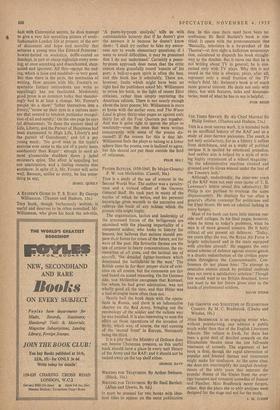PANZER BATTLES. 1939-1945. By Major-General F. W. von Mellenthin. (Cassell,
36s.) THIS is a study of the use of armour in the Second World War. The author was a cavalry- man and a trained officer of the German General Staff. He took part in many of the battles of which he writes, and his personal knowledge gives warmth to the narrative and relieves the book of any tedium which the prosaic title might imply.
The organisation, tactics and leadership of the armoured forces of the belligerents are examined with the pleasing impartiality of a competent soldier, who looks to history for lessons, but believes that nations should pre- pare tli..ir forces for crises of the future, not for wars of the past. His favourite themes are the use of armour in heavy concentrations, the co- operation of all arms, and the tactical use of aircraft, 'the dreaded fighter-bombers which dominated the battlefields in the west.' The British come in for their proper share of criti- cism on all counts. but the comments are fair and based on sound reasoning. On the German side, von Mellenthin recognises that Rommel, for whom he had great admiration, was not wholly good all the time, and that Hitler was a bad strategist more often than not.
Nearly half the book deals with the opera- tions in Russia, and there is an informative chapter on the Red Army, bringing out the psychology of the soldier and the callous way he was handled. It is also interesting to note the effect on those operations of the invasion of Sicily, which was, of course, the real opening of the 'second front' in Europe, Normandy being the third.
It is a pity that the Ministry of Defence does not bestow Christmas presents, as this useful book should have a place in every unit library of the Army and the RAF; and it should not be tucked away on the top shelf either.
GEORGE DAVY










































 Previous page
Previous page